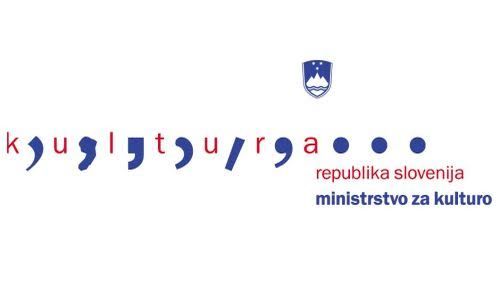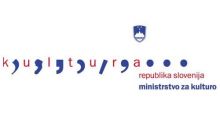The Slovenian media policy has never been based on thorough analyses and strategic approach.
Media strategy controversies in Slovenia


The Slovenian media policy has never been based on thorough analyses and strategic approach. Therefore, some experts even claim there is no media policy in Slovenia, only numerous laws extensively but inefficiently regulating the media.1 The result is a devastated media system.
In the latest National Program for Culture 2014-2017 (summary available here)2 adopted by the National Assembly in November 2013, there is a chapter on media which elaborates several media policy goals more substantially than previous such documents. However, the government which established the goals was replaced soon after that due to political crisis. The new minister of culture Julijana Bizjak Mlakar, appointed after the 2014 extraordinary elections was also replaced recently, but she managed to conclude, during her term, the process of drafting the strategy for media development in Slovenia until 2024. It is the first such document in the history of independent Slovenia.
The document has been a subject of public consultations between mid-June and mid-July 2016, with the new minister of culture Anton Peršak now in charge of processing the comments submitted by the stakeholders.
The Draft Strategy for Media Development in Slovenia3 is presented as a result of the work of the expert committee appointed by the previous minister to elaborate the platform for media strategy development. The expert committee,4 appointed by the minister of culture in September 2015, concluded its work by releasing a position paper for media strategy in Slovenia in May 2016.5 Twelve pubic discussions in all regional centers in Slovenia were held under the initiative of the Ministry and the expert committee between December 2015 and April 2016, focusing on different subjects of media policy. Simultaneously, the Ministry commissioned a survey on the representative sample of the Slovenian population examining how they perceive and use the media. Summaries of twelve public discussions6 and the survey7 have been released by the Ministry in addition to the position paper of the expert committee and the draft strategy for media development in Slovenia.
However, the draft media strategy does not effectively reflect position paper of the expert committee when it elaborates measures for several important parts of the media system. Therefore the expert committee has distanced itself from its content. During the public discussion on the draft strategy Ministry has published a disclaimer admitting that the document is based on its own positions and confirming that the solutions elaborated in the strategy should not be referred as the solutions recommended by the expert committee.
The draft strategy for media development in Slovenia contains a mixture of general ideas (a vision), specific goals and, in some cases, surprisingly very detailed elaboration of potential concrete measures and elements of new regulatory provisions. It is structured around “perspectives”, such as “perspective of users”, “perspective of media”, “financial perspective”, “perspective of journalists and media development.” It integrates as a special and detailed section also a strategy for future development of public broadcaster, Radio-television Slovenia.
Failed intention of de-politicisation of public broadcaster’s governing structures
The latter has been recognized as the most controversial and harmful part of the draft, since the elaborated solutions are quite opposite to the proclaimed goals of the draft media strategy. For instance, the strategy claims the intention to discontinue an exposure of the public broadcaster’s governing and financial structure to the political influence. At the same time, it elaborates the new governing and management structure which makes the public broadcaster’s key programming and management personnel dependent on the Supervisory Board which is to be, with four out of five members, composed of the representatives of various ministries in the Government. The fifth place is reserved for the representative of employees. The draft strategy also clearly states that the Supervisory Board members are to be replaced with the change of the Government. This has been received with shock and negative reactions by relevant stakeholders in the media community, including current programming council of RTV Slovenia, journalists’ association etc. Interestingly, the ministry has released a statement during the public consultations claiming it is revoking that proposition, promising to find a new solution for the governing bodies of public broadcaster in the next stage of processing the strategy and preparing the regulation changes.8
Several other provisions in the draft media strategy also raise concerns. The revision of the system of license fee for public broadcaster (change in the scope and amount of the fee), obligations of the public broadcaster to give part of its funds collected from license fee to local and regional radio and television programmes and to complement own content from less covered regions with the content produced by those private stations, replacement of obligatory media register with the media catalogue where each media shall insert and update their own information, obligations of the media to report to the state all data on number of users, sold copies, advertising tariffs, as well as to inform the anti-concentration agency about each “business decision” which could lead to media concentration in terms of ownership, control of advertising market and governing structures, are some of the novelties which in some cases can lead to less and not more independence and transparency of media. At the same time, the draft strategy does not elaborate at all the role of some of the pillars of the current media system, such as regulatory agency and media inspector, or the prospects for the third sector of media now existing in Slovenia under the category of “local and regional radio and television programs of special significance,” with access to significant state funds. In that way the document fails to provide clear picture of the intended media reform as a whole.
Underlining social and professional empowerment of journalists
There are, however, numerous positive intentions indicated in the Draft Strategy for Media Development in Slovenia until 2024, including the commitment to protection of public interest in all media policy measures, new measures for media ownership transparency and accountability of media owners, measures aiming at improvement of social situation of journalists, support to new business models in media such as non-profit and cooperative structures, initiatives to save quality print media and introduce financial mechanisms of support to production of cultural and other creative content in the media, elimination of harmful practices in advertising, support to self-regulation and introduction of a financial support to investigative journalism, support to mid-career training of journalists and editors, including study visits abroad, as well as policy interventions aimed at providing equal access to quality local and regional media in all regions, and at increasing media literacy among citizens, particularly youth.
Some interesting measures mentioned in the draft strategy include a requirement to sign, and periodically renew, a collective agreement between publishers/broadcasters and journalists,9 while in the absence of collective agreement the media law provisions will be applied, which will establish the rate for journalistic work, equivalent, at least, to the minimum wage for employees with high education in Slovenia.
The strategy, for instance, proclaims it will be “absolutely forbidden” for media content publishers/broadcasters/providers to be at the same time also operators/distributing platforms and networks.
Media literacy shall become an obligatory subject in the schools instead of optional subject as it is now.
Dubious understanding of self-regulation
In terms of self-regulation, the draft strategy refers to the option “seriously considered by the ministry” to enforce, by the law, an obligatory and representative self-regulatory body in the media on national level. However, it then gives priority to genuine self-regulation, under the condition of its functionality. It suggests a kind of co-regulation when announces the intention of the state to oblige all media to publish decisions of the self-regulatory body (if there are more such bodies, they will be free to choose which one they join and respect its decisions), and to include in the employment contracts the provisions which oblige journalists and editors to respect the code of conduct. At the same time, public broadcaster as “a key holder of public interest” will not be allowed to employ or collaborate with the journalists for whom a self-regulatory body declares severe violation of professional conduct.
This illustrates how some detailed and also controversial provisions are included in the draft strategy for media development in Slovenia until 2024, with particularly dubious understanding of self-regulation. Such controversial solutions are causing critical reactions, while some good proposals in the draft are not so much noticed. Mainly, most of the reactions to the draft strategy require the Ministry to better align the next version of the strategy with the position paper of the expert committee, where good and progressive observations and policy proposals are elaborated.
The Ministry has announced that the process of finalisation of the media strategy will lead in the following months to the drafting of new media legislation, which is expected by the end of 2016. However, such plan seems too ambitious for the level of expertise, political and operational capacities of the Ministry of culture and of the ruling coalition in the government, particularly, but not only in the matters of media policy.
1SeeSandra Bašić-Hrvatin, Marko Milosavljević, Slovenskih medijskih 20 let: Quid pro quo, Medijska preža 37, maj 2010. Available at: http://mediawatch.mirovni-institut.si/bilten/seznam/37/politika/#1
2See the full document in Slovenian language at the web site of the Ministry of Culture at: http://www.mk.gov.si/fileadmin/mk.gov.si/pageuploads/Ministrstvo/Drugo/n....
3See the document in Slovenian language available at the web site of the Ministry of Culture at: http://www.mk.gov.si/fileadmin/mk.gov.si/pageuploads/Ministrstvo/Fotogal....
4The members were Sandra B. Hrvatin, Nataša Pirc Musar, Barbara Verdnik, Darja Groznik and Jure Stojan.
5See the document in Slovenian language available at the web site of the Ministry of Culture at: http://www.mk.gov.si/fileadmin/mk.gov.si/pageuploads/Ministrstvo/Fotogal....
6See the document in Slovenian language available at the web site of the Ministry of Culture at: http://www.mk.gov.si/fileadmin/mk.gov.si/pageuploads/Ministrstvo/Fotogal....
7See the survey summary in Slovenian language available at the web site of the Ministry of Culture at: http://www.mk.gov.si/fileadmin/mk.gov.si/pageuploads/Ministrstvo/Fotogal....
8See the announcement of the Ministry of Culture, dated 7 July 2016, at the Ministry's web site section where all relevant documents for public consultations about the draft media strategy are published: http://www.mk.gov.si/si/delovna_podrocja/direktorat_za_medije/javna_razp....
9The implementation of the latest collective agreement for journalists in Slovenia has been blocked by the media industry bodies for many years.


